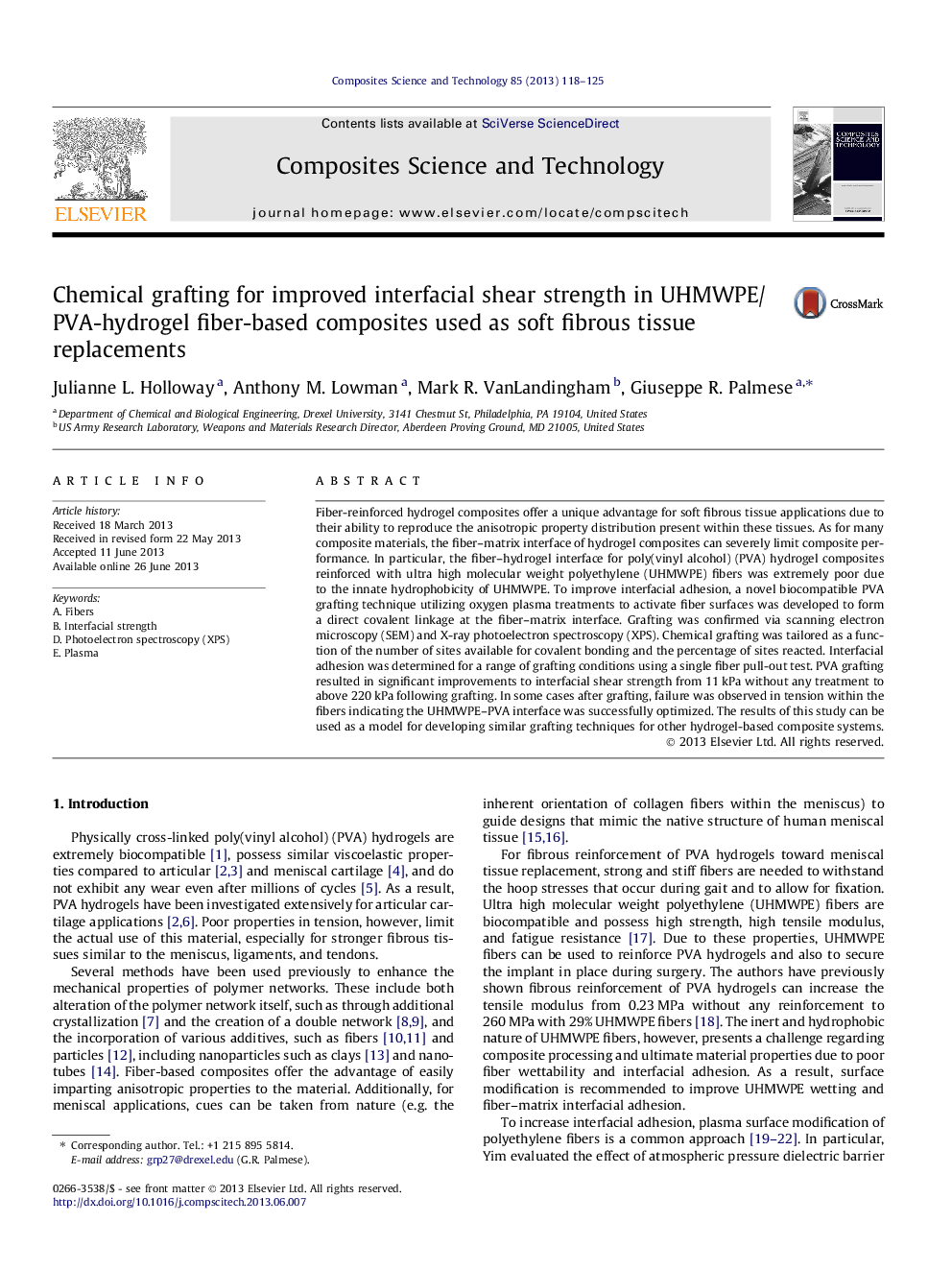| Article ID | Journal | Published Year | Pages | File Type |
|---|---|---|---|---|
| 7215950 | Composites Science and Technology | 2013 | 8 Pages |
Abstract
Fiber-reinforced hydrogel composites offer a unique advantage for soft fibrous tissue applications due to their ability to reproduce the anisotropic property distribution present within these tissues. As for many composite materials, the fiber-matrix interface of hydrogel composites can severely limit composite performance. In particular, the fiber-hydrogel interface for poly(vinyl alcohol) (PVA) hydrogel composites reinforced with ultra high molecular weight polyethylene (UHMWPE) fibers was extremely poor due to the innate hydrophobicity of UHMWPE. To improve interfacial adhesion, a novel biocompatible PVA grafting technique utilizing oxygen plasma treatments to activate fiber surfaces was developed to form a direct covalent linkage at the fiber-matrix interface. Grafting was confirmed via scanning electron microscopy (SEM) and X-ray photoelectron spectroscopy (XPS). Chemical grafting was tailored as a function of the number of sites available for covalent bonding and the percentage of sites reacted. Interfacial adhesion was determined for a range of grafting conditions using a single fiber pull-out test. PVA grafting resulted in significant improvements to interfacial shear strength from 11Â kPa without any treatment to above 220Â kPa following grafting. In some cases after grafting, failure was observed in tension within the fibers indicating the UHMWPE-PVA interface was successfully optimized. The results of this study can be used as a model for developing similar grafting techniques for other hydrogel-based composite systems.
Related Topics
Physical Sciences and Engineering
Engineering
Engineering (General)
Authors
Julianne L. Holloway, Anthony M. Lowman, Mark R. VanLandingham, Giuseppe R. Palmese,
